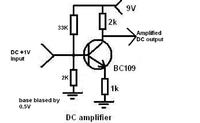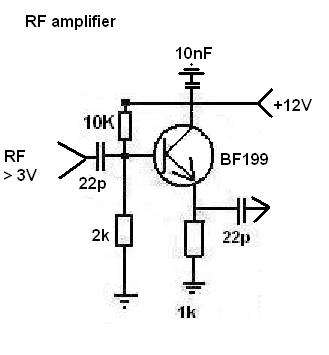Follow along with the video below to see how to install our site as a web app on your home screen.
Note: This feature may not be available in some browsers.
u said to "Feed the signal through a small capacitor directly to the transistor base. "betwixt said:Not quite.
The diode will have a reverse voltage across it from the bias network, until you overcome that AND Vf of the diode it will not conduct. So you need (with your values shown) about 4V of signal before you measure anything.
Germanium diodes will perform better at high frequencies than Shottky silicon ones, although the diodes you suggest are for high speed switching, they are not best for VHF and above small signal rectification.
You will probably get better results if you remove the 15K resistor, short out the 1K resistor, and connect the diode where the 6.8K resistor is. Feed the signal through a small capacitor directly to the transistor base. That will let the transistors own B-E diode junction do the rectification and eliminate the voltage drops. Still far from perfect but better than what you have.
Brian.







